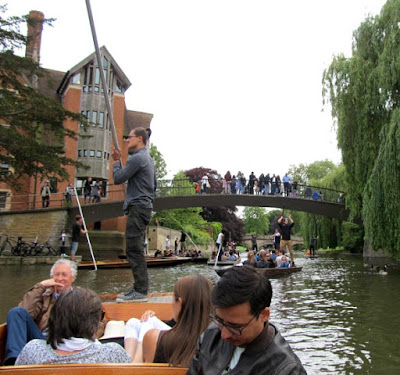 |
| Beach Huts in Torquay, Agatha Christie's hometown |
I first noticed these colorful beach huts while exploring the counties of Somerset, Devon, and Cornwall on our 2015 trip to England. People rent these wood or brick buildings by the week, or even by the year. It gives them a place to store their beach items, and a little home-away-from-home while relaxing by the water each day. This allows parents to watch their kids play from the comfort of a chair on the wooden deck in front of the hut, or sit inside, share a meal or a game of cards, and even take a nap out of the sun. Nearby shops sell food and drink, rent other seaside amenities, and public toilets are also usually nearby.
On our visit to Cromer this year, a seaside town in Norfolk county, we saw more of these huts lining the beach. Cromer was a picturesque rocky beach, but the sea could get rough, and the wind can be strong. Some of these huts had windows with curtains, small refrigerators and sinks. Such conveniences allow one to enjoy the view, sheltered from the wind or rain, and enjoy more of the comforts of home.
 |
| Beach Huts in Cromer |
In the Doctor Who novel The English Way of Death by Gareth Roberts, British biscuit (cookie) magnate Hepworth Stackhouse notices a small, lonely building while vacationing on the coast of England circa 1930.
It was a small brick building, five feet square, without external signs or markings. On the side facing the cove's wall was a wooden door, fitted with a brass knob. It was every inch a representative of its kind, with nothing of note in its appearance. Its singular oddness lay in its location. Why, wondered Stackhouse, would anybody choose to build a bathing-hut here, three quarters of a mile from the beach, on an area strewn with large rocks and pebbles?
Unfortunately, Stackhouse decides to investigate this mystery. When he tries to open the door, a gaseous intelligence overtakes him. Possessed by this malevolent alien, he kidnaps a prominent scientist, kills homeless people for sustenance, and raises a zombie army. It's up to the fourth Doctor, his time-lord companion Romana, his robot dog K-9, and a merry group of time travelers from the future, to prevent the intelligence controlling Stackhouse from destroying the Earth.
After learning the dangers a lonely English bathing hut might pose to humanity, I figured I had better learn more. An online search for "bathing hut" yielded two options: a bathing machine, and a beach hut. During England's Victorian era, bathing machines resembled today's colorful wooden beach huts. Only they were set on wheels.
A woman entered a Victorian bathing hut fully clothed on dry land. The machine was then pulled by horses or people over the sand and rocks beach. When the woman finished changing into her bathing suit, she walked out of the hut, and stepped down the water.
By 1930, when the events in The English Way of Death occurred, these wheeled huts seem to have been replaced by stationary changing rooms. Perhaps some, those built out of nick or stone, even sported modern conveniences like toilets and sinks. Or perhaps what Stackhouse saw was not a changing facility, but a beach hut for rent.
So did British biscuit (cookie) magnate Hepworth Stackhouse see a changing station, or a beach hut for rent? Sadly, Gareth Roberts' record of events is unclear. But given my uncertainty, I'll be more wary of these colorful additions to English beaches on future trips. And the question remains: what should I do if I see one of these brightly painted little buildings set off by itself, and located farther away from the beach than seems practical? Should I call the police? Or should I just go to the nearest shop, and buy myself a delicious English biscuit (cookie)?
Dragon Dave


































